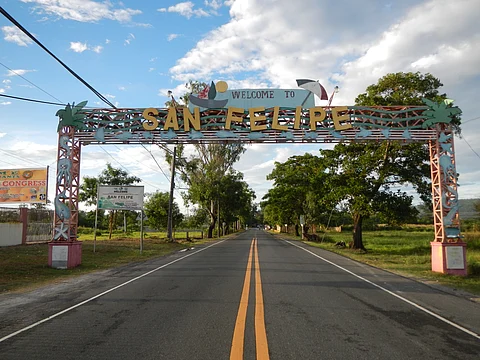
- NEWS
- the EDIT
- COMMENTARY
- BUSINESS
- LIFE
- SHOW
- ACTION
- GLOBAL GOALS
- SNAPS
- DYARYO TIRADA
- MORE

San Felipe, Zambales – The recent destruction of some resorts near the coastal waters of this town has been a very sensitive topic, with some pointing to the destruction brought about by human activity or dredging, while others cite nature’s dominion over everything.
So, which one is it?
Coastal erosion in Zambales is significantly impacted by lahars (volcanic mudflows) from Mount Pinatubo, particularly along the Bucao River in Botolan. Bucao River is notable for being one of the rivers affected by the lahar flow from the 1991 Mount Pinatubo eruption.
These lahars, composed of ash and other volcanic debris, are carried downstream during monsoon rains, altering river courses and contributing to erosion along coastlines. Additionally, human activities like dredging can exacerbate coastal erosion.
Mount Pinatubo's 1991 eruption deposited massive amounts of volcanic material, which continues to be mobilized by rainfall and carried downstream as lahars. Lahars have altered riverbeds and drainage patterns, leading to changes in the coastline, including erosion and accretion.
The increased sediment load in rivers, combined with the force of water during heavy rains, contributes to erosion along the coast, particularly near river outlets.
Activities like dredging, where materials are removed from the seabed or riverbed, can disrupt sediment flow and lead to erosion, as observed in some Zambales coastal areas.
Coastal erosion is a natural process, but human activities can accelerate it, making it a more significant hazard. Reclamation and quarrying activities can also disrupt sediment supply and transport, leading to coastal erosion.
The 1991 eruption of Mount Pinatubo has had a lasting impact on Zambales, with lahars from the volcano continuing to drive coastal erosion. Human activities, such as dredging, can further exacerbate this problem.
Coastal studies from the Philippine Institute of Volcanology and Seismology (Phivolcs), Department of Environment and Natural Resources (DENR), and the University of the Philippines Marine Science Institute cite that the erosion rate in lahar-affected coastal areas of Zambales like Botolan, San Narciso, and San Felipe has ranged from 0.5 to 2.5 meters per year in unprotected or high-energy shoreline zones.
The erosion rates are generally higher in areas where there are no coastal protection measures in place, such as seawalls or other structures. And yet, people build resorts in those coastal areas.
So who’s to blame? You tell me.
